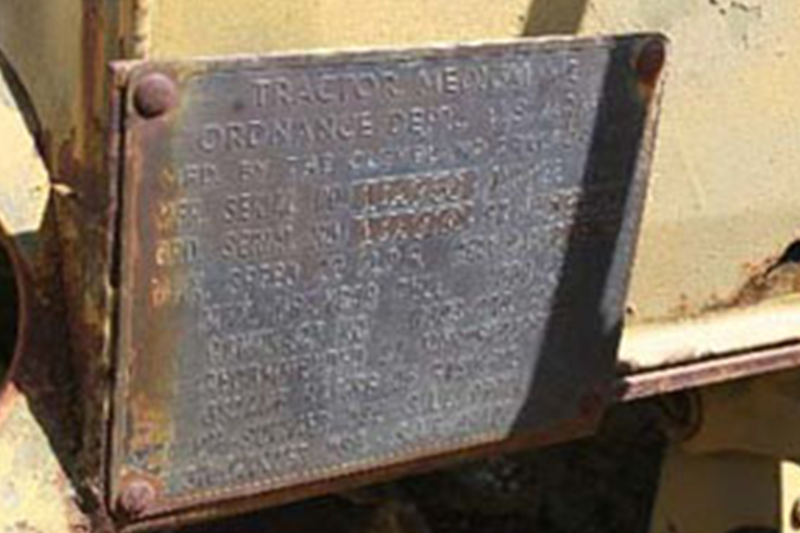Specifications
| Engine: | Hercules WXL C3, 404 cubic inch, 6 cylinder | |
|---|---|---|
| Horsepower: | 150 hp at 3,000 RPM | |
| Torque: | 312 ft-lb at 1,200 RPM | |
| Turning Radius: | 10.5 feet | |
| Max Speed: | 22 mph | |
| Weight: | 13,500 lbs | |
| Length: | 166 inches | |
| Width | 70 inches | |
| Contact Length | 63 inches | |
| Fording Depth: | 32 inches | |
| Fuel Capacity: | 33 Gallons | |
| Winch: | Gar-Wood 7,500 lbs | |
| Max. Drawbar Pull: | 7,500 lbs | |
| Status: | Static Display | |
| Owner: | Estrella Warbird Museum | |
History
The M2 High-Speed Tractor (HST) was manufactured by the Cleveland Tractor Company for the U.S. Army Ordnance Department. Termed an MG-1+ by Cletrac, 8,510 were manufactured during World War II, primarily for use on airfields as a tow tractor and maintenance vehicle.
Powered by a 404cid Hercules WXLC3 engine driving a 4-speed transmission, the vehicle is capable of attaining speeds up to 22mph when the high rpm range is unlocked on the governor, allowing the engine to achieve 3,250 rpm. With the governor set at 2,500rpm, speeds up to 15 mph can be attained. Steering is accomplished through a Cletrac controlled differential that uses planetary gearsets to “downshift” one track when the corresponding steering lever is pulled. In this way, power is always being transmitted to both tracks making the steering action smoother and improving safety on steep slopes. Compared to the traditional “clutch and brake” steering found on most other crawlers of this vintage, the Cletrac differential has the disadvantage that it is not possible to lock one track and spot-turn around the braked track. Instead, the minimum turning radius is 10.5 ft. While this was a disadvantage for bulldozers, the controlled differential did prevent the tractor from tearing up pavement and turf, keeping the surface smooth for aircraft operations.
The M2 is equipped with a swinging drawbar designed for use in towing aircraft, as well as a second, swiveling pintle hook for towing ammunition, maintenance, & other types of trailers. Some testing was done to determine the suitability of the M2 as a gun-towing tractor, but it was quickly determined that it lacked the space to support the gun crews and carriage of ammunition and, as a 7-ton class machine, it was too light to pull the heavier howitzers and was eclipsed in this role by the M4 13-ton HST, M5 18-ton HST, and the M6 38-ton HST. However, with rubber tracks that were suitable for use on paved surfaces as well as grass and mud, the tractor performed well on the primitive airfields that were common in forward areas during the war.










